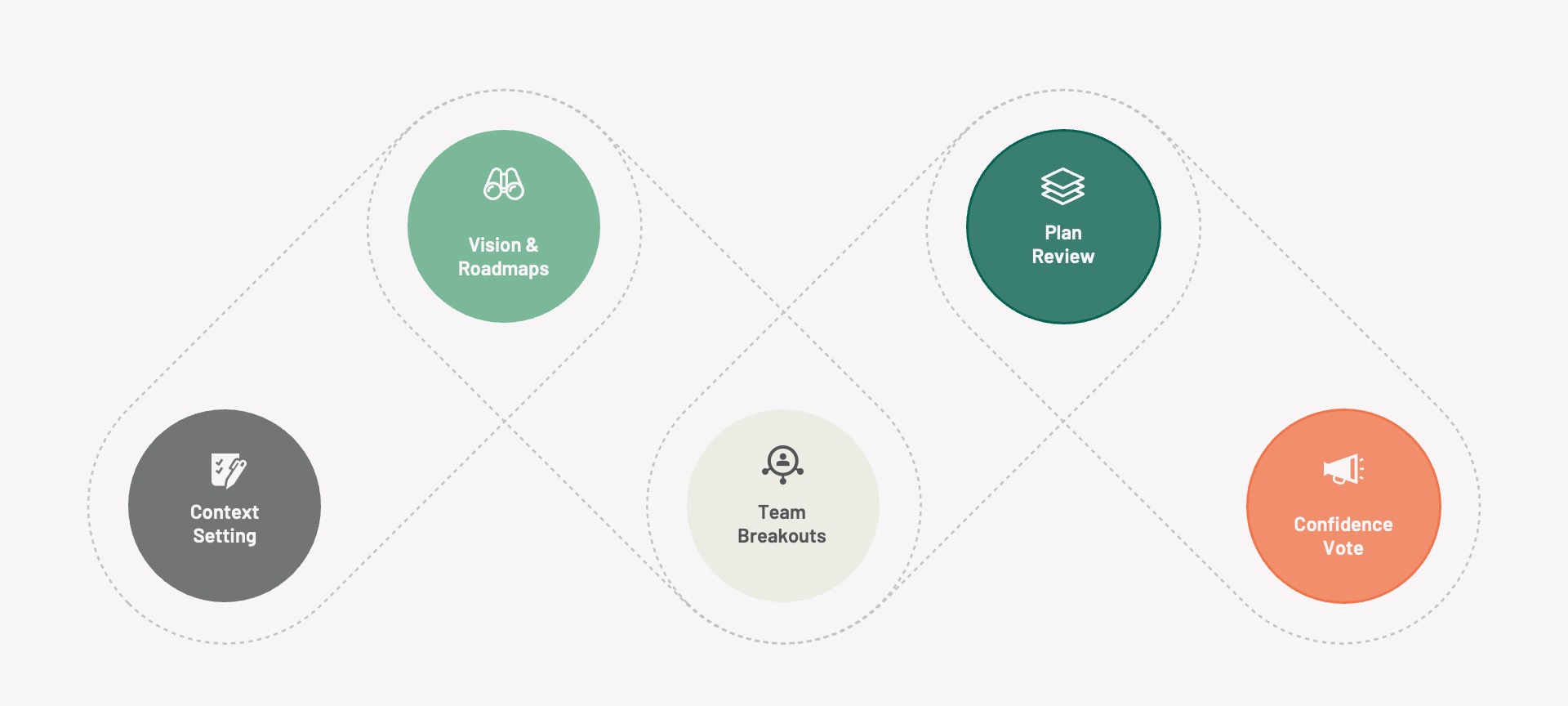It would be no surprise if you were to look across any organization today and find at least one or two teams organized around delivering value to the business using Agile methodologies. Over the past couple of decades Agile has permeated many organizations on some level, but Agile is still thought of by many as primarily relating to IT and engineering teams. It’s a process in which teams work together in time-boxed iterations, often called “Sprints,” with each sprint representing a short term plan to deliver against a continually shifting backlog of work across a multitude of stakeholders.
The development of new digital capabilities has grown more complex, and organizations are looking for ways to speed up the delivery of those capabilities to market. To achieve this, many businesses look to lead their organizations through digital transformations and scale Agile beyond just IT teams.
While there are many frameworks that organizations utilize for scaling Agile (SAFe, Large Scale Scrum, Disciplined Agile Delivery, etc.), there is one common element across all of them: a need to plan and coordinate across multiple business and IT teams to promote consistent value delivery quarter-over-quarter, year-over-year. That’s where Big Room Planning comes into play.
What is Big Room Planning?
Whether it is referred to as PI Planning, Quarterly Planning, or any other creative name an organization chooses, Big Room Planning is a simple idea that builds on the Agile principle of promoting transparency and effective communication through face-to-face conversations. It is a one-to-two day event where all teams required to deliver value against the goals of the business come together in a “big room” to coordinate and collaborate toward a shared understanding of how to accomplish the goals over a period of time (typically a quarter).
That’s a bold statement and seems relatively “easy” if all that’s needed is to get everyone in a room talking, but the difficult part is ensuring that the appropriate preparations are made so that the meeting is set up for success with clear expectations.
Each organization is unique and there are many different strategies and implementation guides that can be applied in preparation for a Big Room Planning event. Typically every event follows similar elements that can be adapted to an organization’s unique needs. An example outline of this is shown here:

- 1. Context Setting – Sometimes when teams are working in the weeds of a given capability, it’s hard to know how or why decisions are being made which then impacts the ability to deliver effective solutions against the objectives for that business. By providing context at the beginning of a planning session, leaders share the current state of the business and how solutions being developed are addressing customer needs. This, in turn, provides guardrails as teams are prioritizing quarterly goals.
- 2. Vision and Roadmaps – Product Managers provide a vision and roadmap for individual capabilities (features) that have been prioritized to meet specific business needs. Teams will use these features to break down and define the work that is needed for the quarter. Special attention should be made if there has been a shift in priority from one quarter to another so that teams can see how their contributions ladder up and make a difference.
- 3. Team Breakouts – Teams use this time to break down and size the features into backlog items and create a plan that is visible to all other teams. If there are any dependencies or risks identified, they are raised and provided to the appropriate supporting team. Once the team has broken down the features and understands their capacity to achieve these features, they draft objectives that can be committed to for the quarter.
- 4. Plan Review – During the plan review, all the teams come back together from their breakouts to present their plans. During their review, teams highlight risks, dependencies, and impediments to their proposed quarterly objectives. At this point if there are any concerns with the proposed plans, teams are asked to adjust their plans and then present the revision until all teams have come to an alignment on the quarterly objectives, risks, and dependencies.
- 5. Confidence Vote – Once a plan has been approved, teams are asked to conduct a confidence vote on their commitment to the objective they included as part of their plan. If there is a lack of confidence, the plan should be evaluated to ensure realistic delivery within the timeframe allotted, and the team should propose changes as needed so that all team members feel confident in their ability to deliver.
The Power of Big Room Planning
When strictly looking at the hours needed for a Big Room Planning event, many leaders might wonder if it is worth the investment. While this must be evaluated by each individual organization, we have found that typically the result is well worth the initial investment. Big Room Planning can deliver value in the following key areas:
- Prioritizing Business Objectives – Big Room Planning drives visibility toward competing priorities across stakeholder groups and provides a forum by which decisions can be immediately made to ensure all teams can align to a common business objective.
- Dependency Mapping – Digital products are complex and require multiple teams to complete. Big Room Planning allows time for identification of cross team and cross organization dependencies to ensure an appropriate runway has been provided to deliver commitments.
- Transparency – Including all teams and stakeholders in the planning builds trust and confidence in the organization’s ability to consistently deliver value against commitments.
- Capacity Planning – By having a roadmap and estimating the features during the team breakout, Big Room Planning provides teams with a clear picture of their capacity during the quarter to deliver against their commitments.
- Risk Reduction – With many teams working to deliver value for the business, there is always the possibility of something being overlooked. While no process can ever truly mitigate all of the risks associated with complex change, Big Room Planning begins to break down those barriers by promoting the right conversations.
Conclusion
Big Room Planning can drive consistent value delivery, a shared understanding of business objectives, and a clear quarterly roadmap that meets the needs of the business transformation objectives for teams to follow. To achieve these values, it’s important to remember that there is no one-size-fits-all approach and the event should not become a rote exercise to check a box. As with everything Agile, organizations should continuously adapt and improve the process to promote engagement from all stakeholders and break down barriers so that the space is created to engage in meaningful conversations.
—
Big Room Planning and other Agile initiatives can be overwhelming. Our team at TGG can help you experience the benefits of Agile work streams without the stress of doing it alone. Click below to connect and explore how Agile in action can help your organization.


